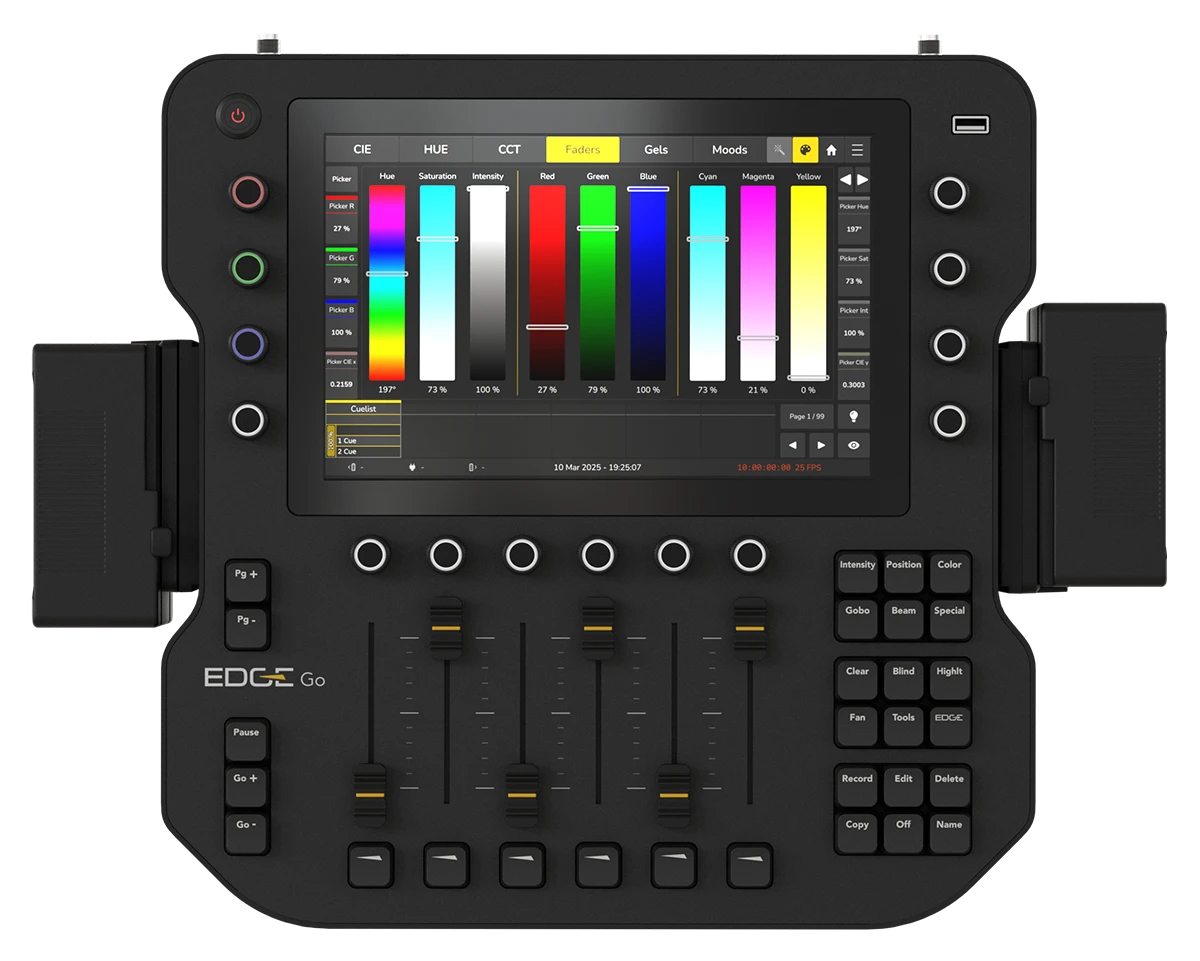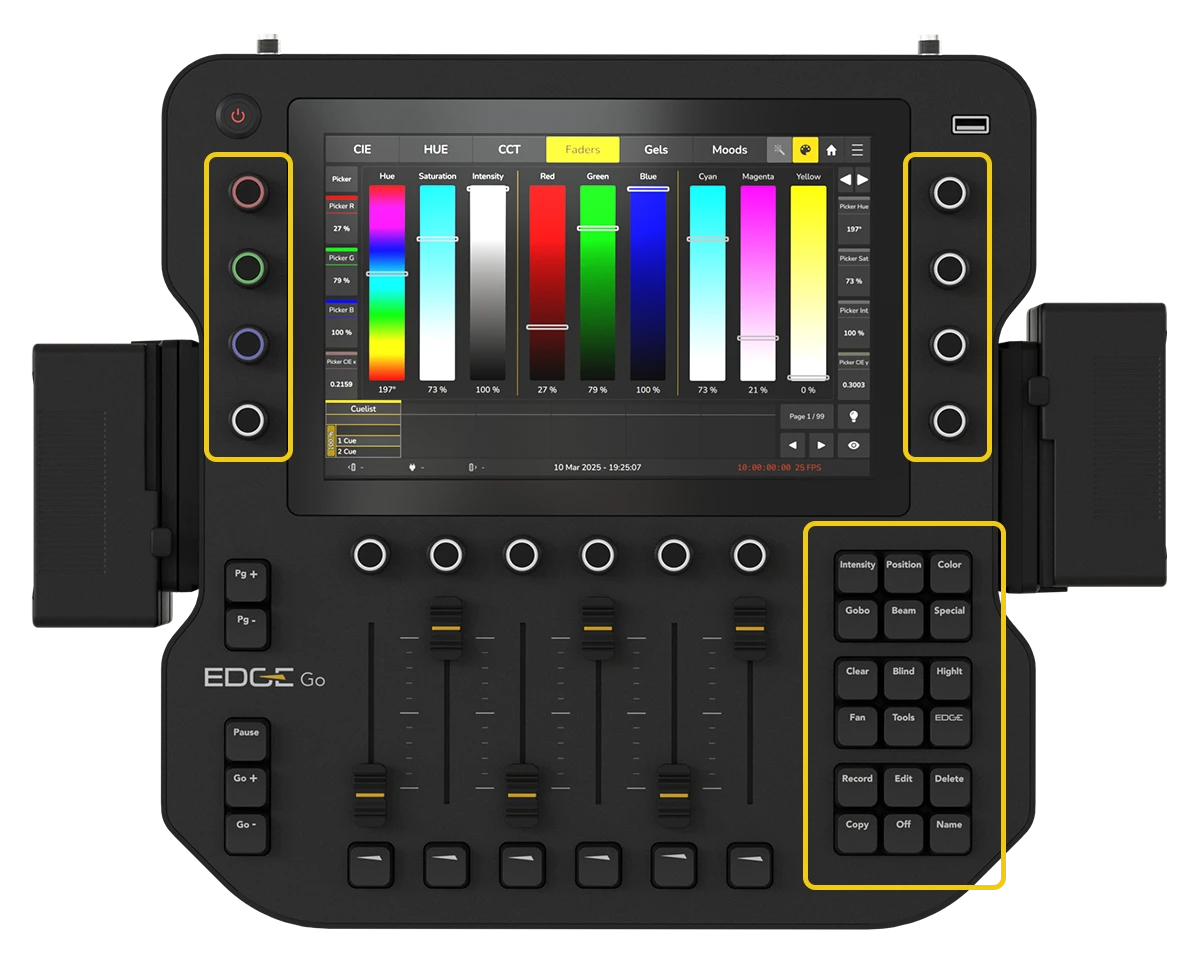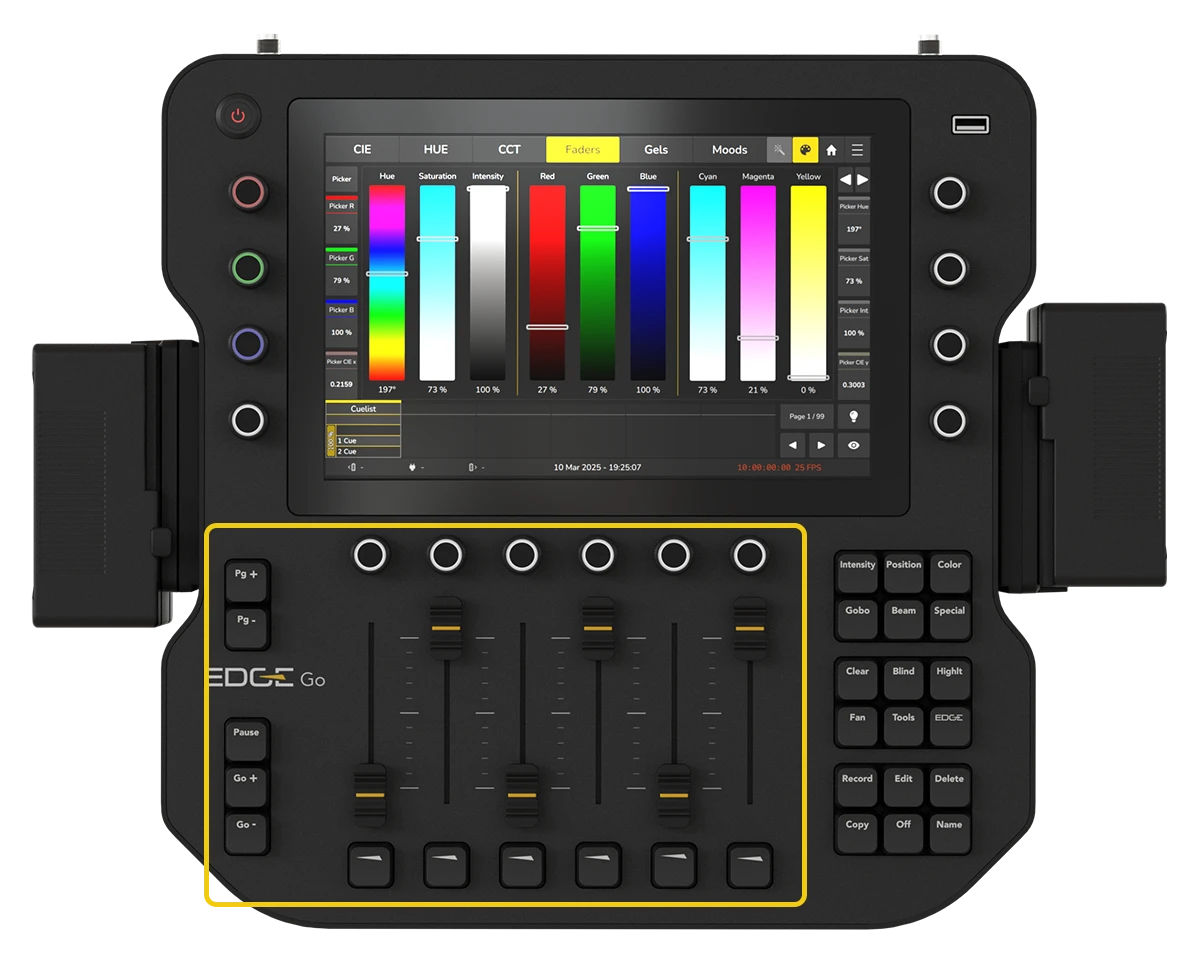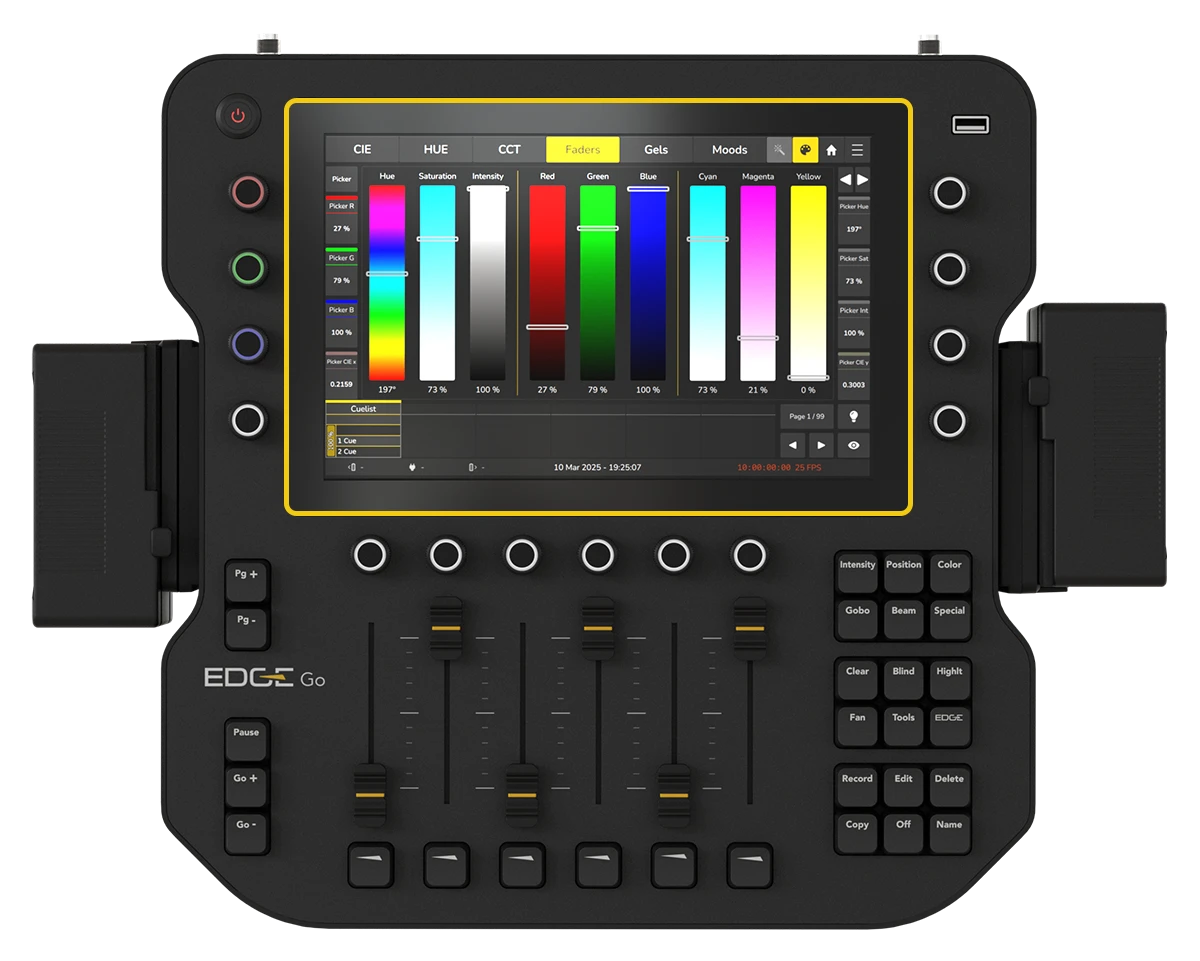1.1 Front View
The Frontpanel of the EDGE Console contains all the essential buttons and faders required for operation, such as:
- Playback Faders: These faders are used for controlling playback, with each fader consisting of an encoder, fader, and button. They can be assigned to manage multiple cues, group master dimmers, or act as a GrandMaster fader. The function of these controls is customizable to suit the user’s needs. The console supports 99 Fader Pages and a Template Page for easy access to frequently used controls.
- Programming Section: This section provides the necessary controls for programming and editing your show. It includes various buttons that allow you to record, copy, move, and adjust settings, with some buttons cycling through different modes (e.g., Record, Merge, Remove; Copy, Move).
- Touchscreen: The multitouch touchscreen offers an intuitive, user-friendly graphical interface, enabling easy control and navigation. It allows for multiple faders, such as in the color fader view, to be moved simultaneously, enhancing the speed and flexibility of your work.
This comprehensive Frontpanel layout ensures that all functions are easily accessible for both programming and live operation.

1.1.1 Programming Section
This section of the EDGEs Frontpanel contains all the keys necessary for programming your fixtures. Take a few moments to familiarize yourself with the buttons located here. While it may seem overwhelming at first, rest assured that with time, you’ll develop muscle memory to navigate the controls easily. Additionally, all value entry controls are accessible through these buttons.
Some buttons have multiple modes that can be activated by pressing them repeatedly. For example:
- Pressing the Record button multiple times will cycle through different record modes: Record, Merge, and Remove.
- Pressing the Copy button repeatedly will switch between Copy and Move modes.
- Pressing the Name button will toggle between Name and Appearance options.
Take your time getting accustomed to these functions, as mastering them will greatly enhance your programming efficiency.

1.1.2 Playback Faders
The EDGEs Frontpanel consists of multiple playback fader controls, each containing an encoder, fader, and button located below the fader. These controls may hold Playbacks containing multiple Cues or Group Master Dimmers and can also be assigned to function as a GrandMaster Fader. The Encoder, Fader, and Button functions are fully customizable to suit your needs. EDGE supports 99 Fader Pages in addition to a Template Page.
Fader Pages are used to organize and manage multiple sets of faders, allowing you to access and control a large number of playbacks without overwhelming the panel. Each fader page represents a different set of controls, so you can assign different playbacks, effects, or group masters to each page. This provides a clean and efficient way to access different sets of controls depending on the current programming or show setup. With up to 99 fader pages, you have plenty of space for assigning and controlling a wide variety of functions.
The Template Page is used to make a playback or control available on every fader page of the console. This means that elements which need to be accessed frequently, such as key playbacks, group masters, or commonly used functions, can be placed on the Template Page. These controls will then be visible and accessible on any fader page you select, ensuring that important elements are always within reach, no matter which page you are working on. This feature helps streamline workflow and ensures quick access to essential controls without needing to switch pages.

1.1.3 Touchscreen
The Touchscreen on the EDGE Console is an essential part of the user interface, providing an intuitive way to interact with the system.
The touchscreen supports multitouch, allowing you to manipulate multiple faders at once. For example, in the color fader view, you can adjust several faders simultaneously, making it easier to control multiple parameters at the same time.
The interface is designed to be user-friendly, with a graphical layout that organizes the functions in a way that is easy to navigate and operate. This ensures that you can access and adjust settings efficiently while using the console.
